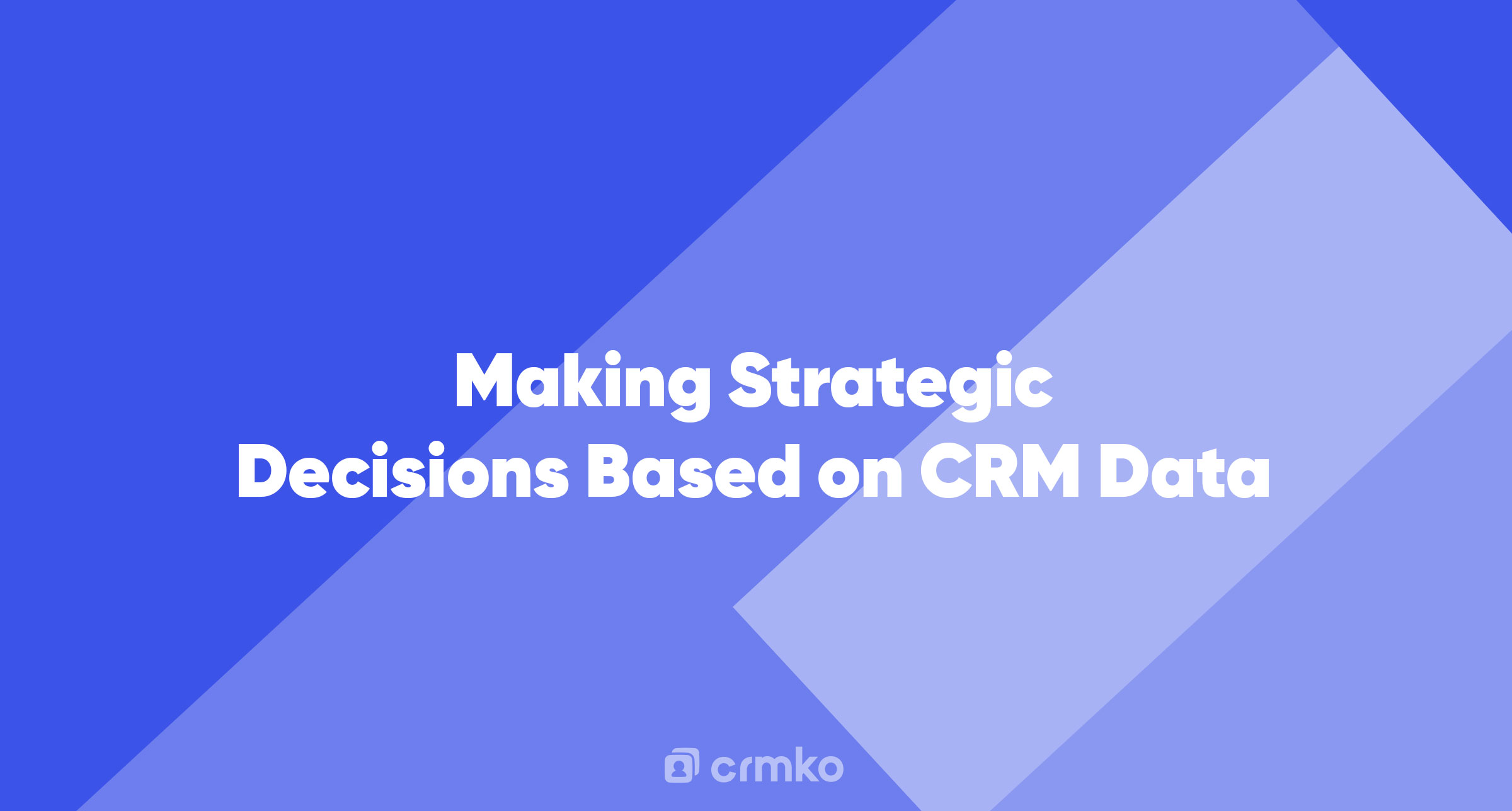Harnessing the power of Customer Relationship Management (CRM) software is an excellent way to drive data-driven decisions that can propel your business to new heights. This article will explore the importance of a data-led CRM strategy, the benefits it offers, and how you can implement it to improve efficiency, customer engagement, and ultimately, your bottom line.
Understanding CRM and Its Importance
CRM, an acronym for Customer Relationship Management, is a tool designed to manage interactions with current and potential customers. It consolidates customer data into one database, facilitating businesses to track customer interactions, manage leads, analyze sales data, and much more1.
CRM is more than just a tool; it's a strategic approach that places customers at the center of business operations2. As the business environment becomes increasingly customer-centric, CRM systems play a pivotal role in managing customer relationships across the entire customer journey, spanning marketing, sales, and customer service3.
The primary goal of CRM is improving overall business relationships to grow your business3. In essence, CRM is the fastest-growing enterprise application software category because it works and is critical for running a streamlined, profitable business3.
The Power of Data-Driven Decisions with CRM
The real power of a CRM system lies in its ability to facilitate data-driven decision-making. Here's how:
1. Understanding Customer Behavior
CRM software collects and analyzes data on customer behavior, such as purchasing patterns, product preferences, and interaction history1. This data can help businesses understand their customers' needs and preferences, informing decisions about product development, marketing strategies, and sales tactics1.
2. Sales Performance Analysis
CRM software provides detailed analytics on sales performance, tracking metrics like sales growth, conversion rates, sales cycle length, and more1. Executives can use this data to set sales targets, assess the effectiveness of sales strategies, and identify areas for improvement1.
3. Forecasting and Market Analysis
CRM software can generate sales forecasts and market analysis reports using historical data and market trends1. These insights can assist executives in making decisions about inventory management, production planning, and strategic direction1.
4. Improved Customer Segmentation
CRM software can help executives segment their customer base into distinct groups based on factors like buying behavior, demographics, and product preferences1. This information can inform targeted marketing campaigns, personalized sales approaches, and product development decisions1.
5. Evaluating Marketing ROI
CRM software can track the results of marketing campaigns, providing data on metrics like customer engagement, conversion rates, and overall ROI1. This information can help executives assess the effectiveness of marketing strategies and make data-driven decisions about future marketing investments1.
6. Enhanced Supplier and Partner Relationship Management
CRM systems can also manage relationships with suppliers and partners1. Analyzing this data, executives can make informed decisions about supplier selection, contract negotiations, and partnership opportunities1.
Developing a Successful Data-Led CRM Strategy
Developing a successful data-driven CRM strategy involves several key steps:
1. Define Overall Vision and Goals
Start by defining your specific needs and objectives for the CRM system1. What are you hoping to get out of a CRM system? Maybe you want to increase customer satisfaction or boost productivity and efficiency2. Ensure your goal aligns with the rest of your strategies and platforms to drive business goals2.
2. Identify Buyer Personas and Target Customers
Having a clear and defined buyer profile is essential to creating a customer-centric CRM strategy2. Understand who is purchasing from you and what their pain points are. Make sure your ideal customer profiles are clearly defined and detailed2. That way, you know precisely who you should be targeting, and what kinds of problems they may be facing2.
3. Plot Out the Customer Journey
To manage customer relationships effectively, you need to know every step of the customer journey, starting from the very first touchpoint2. Map every customer interaction from the moment they first discover your brand2. This mapping exercise will allow you to find opportunities and red flags, shaping your strategy2.
4. Leverage Artificial Intelligence (AI)
AI can assist your CRM strategy in various ways, such as customer service assistance, lead management, and best course-of-action analysis2. AI can be a useful addition to your CRM application when it comes to lead scoring2. AI can analyze leads based on interest or buying history, providing a score and recommending what steps should be taken by sales and marketing teams to increase success2.
5. Enable Automation Capabilities
CRM applications can automate workflows that will trigger an action once a specific event takes place2. For example, once a service request is closed, an email response can be triggered to inform the customer2.
6. Integrate Data for Better Communication
Many modern CRM systems provide communication capabilities that enable access to data via web services2. This kind of collaboration enables a company to communicate with other sources and organizations to share customer information needed to quickly handle customer service requests2.
7. Measure Your CRM Strategy's Success
Reporting on your CRM flows and data analytics will be critical to your strategy2. Start with mapping out key metrics you want to measure and build on them2. An example of a KPI for your CRM strategy would be engagement2.
Conclusion
In the competitive business landscape, executives need reliable, real-time data to make informed decisions1. By leveraging the insights from CRM software, businesses can make data-driven decisions that drive growth, improve efficiency, and enhance customer satisfaction1. A well-planned and implemented data-led CRM strategy can be a game-changer, fostering customer loyalty, increasing productivity, and ultimately, boosting your bottom line.
Footnotes
- Gridlex. (n.d.). Data-Driven Decision Making: CRM Software for Manufacturing Executives. Retrieved from https://gridlex.com/a/data-driven-decision-making-st5368
- O'Malley, B. (2023, January). Harnessing your CRM to make data-driven decisions. Retrieved from https://www.linkedin.com/pulse/harnessing-your-crm-make-data-driven-decisions-beth-o-malley-mcim
- ZoomInfo. (2021, January 18). 6 Steps in Developing a Data-Driven CRM Strategy. Retrieved from https://pipeline.zoominfo.com/sales/crm-strategy/
